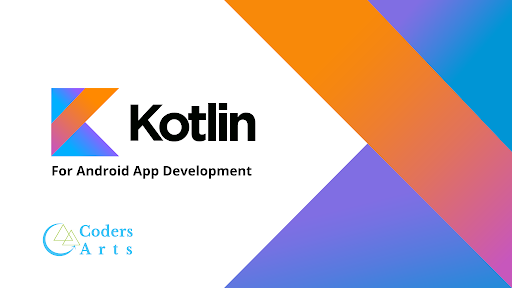Efficient Dependency Injection in Android using Koin and Kotlin
- Abhay Tiwari
- Mar 1, 2023
- 4 min read
Dependency Injection (DI) is a software design pattern that provides a technique for removing tight coupling between classes and improving the testability, maintainability, and reusability of code. In Android, DI is widely used to simplify the development process and make it more efficient.
There are several DI frameworks available in the market, but in this blog, we will focus on Koin, a lightweight dependency injection framework for Kotlin.
Koin is a Kotlin-based dependency injection framework that is easy to use and does not require any additional code generation or reflection. It uses a DSL (Domain-Specific Language) to define dependencies and supports both constructor injection and property injection. Let's dive deeper into the concept of DI using Koin in Android.

Prerequisite:
To fully understand the concept of Dependency Injection in Android using Koin and Kotlin, you should have a good grasp of the following:
Kotlin Programming Language: Koin is a dependency injection framework built specifically for Kotlin, so you should have a good understanding of the Kotlin programming language, including its syntax and features.
Android Development: You should be familiar with Android development concepts such as Activities, Fragments, and Views.
Object-Oriented Programming: Dependency Injection is a software design pattern that requires a good understanding of object-oriented programming concepts such as classes, interfaces, and inheritance.
Design Patterns: Dependency Injection is just one of many software design patterns that are commonly used in Android development. Having a good understanding of other patterns such as Model-View-ViewModel (MVVM) and Clean Architecture can also be helpful.
Gradle Build System: You should be familiar with the Gradle build system used in Android development, including how to add dependencies to your project.
Having a good understanding of these topics will help you get the most out of this blog on Dependency Injection in Android using Koin and Kotlin.
Setting up Koin in your Android project is a simple process. Here are the steps to follow:
Step 1:Add Koin dependencies to your project
To use Koin in your Android project, you need to add the following dependencies to your app-level build.gradle file:
dependencies {
implementation "io.insert-koin:koin-android:$koin_version"
implementation "io.insert-koin:koin-androidx-scope:$koin_version"
implementation "io.insert-koin:koin-androidx-viewmodel:$koin_version"
}
where $koin_version is the version of Koin you want to use. You can find the latest version on the official Koin website.
The koin-android dependency provides the core Koin functionality, while koin-androidx-scope and koin-androidx-viewmodel provide extensions for integrating Koin with AndroidX lifecycle components.
Step 2:Create a Koin module
Once you have added the dependencies, you need to create a Koin module that defines the dependencies required by your Android application. A module is a container for related dependencies, and you can create multiple modules for your application. Here's an example of a Koin module:
val myModule = module {
single { MyService() }
factory { MyViewModel(get()) }
}
In the above code, we have defined two dependencies: MyService and MyViewModel. The single function is used to define a singleton instance of MyService, and the factory function is used to create a new instance of MyViewModel each time it is requested.
Step 3: Create a Koin instance
After defining your Koin module, you need to create a Koin instance and load your module into it. You can do this in your Application class as follows:
class MyApplication : Application() {
override fun onCreate() {
super.onCreate()
startKoin {
androidContext(this@MyApplication)
modules(myModule)
}
}
}
In the above code, we are creating a Koin instance and loading our myModule module into it. We are also passing the androidContext function to provide the context of our Android application.
Step 4: Inject dependencies into your Android components
Once you have set up Koin, you can use it to inject dependencies into your Android components. Let's take an example of injecting dependencies into an Activity.
class MainActivity : AppCompatActivity() {
private val myViewModel by viewModel<MyViewModel>()
override fun onCreate(savedInstanceState: Bundle?) {
super.onCreate(savedInstanceState)
setContentView(R.layout.activity_main)
// Use myViewModel here
}
}
In the above code, we are using the viewModel function to inject an instance of MyViewModel into the myViewModel property. Koin will automatically provide the instance of MyViewModel created by the factory function defined in our myModule module.
That's it! You have successfully set up Koin in your Android project and are now ready to use it to simplify your dependency injection needs.
Conclusion
Dependency Injection is a powerful technique that makes code more modular, maintainable, and testable. Koin is a lightweight DI framework for Kotlin that makes it easy to inject dependencies into your Android application. It is easy to set up and use, and its DSL makes it simple to define and manage your application's dependencies. By using Koin, you can write cleaner, more efficient code and make your development process more streamlined.
If you need help with your SQLite and Kotlin integration project, or any other project or assignment related to programming, don't hesitate to reach out to CodersArts. Our team of experienced developers and tutors can help you with any programming problem or task you may have, and provide you with personalized assistance to ensure your success. Contact us today to learn more about our services and get started on your project.
Thank you
The journey of solving bugs and completing projects on time in Kotlin can be challenging and lonely. If you need help regarding other sides of Kotlin, we’re here for you!
Drop an email to us at contact@codersarts.com with the Project title, deadline, and requirement files. Our email team will revert back promptly to get started on the work.
Comments